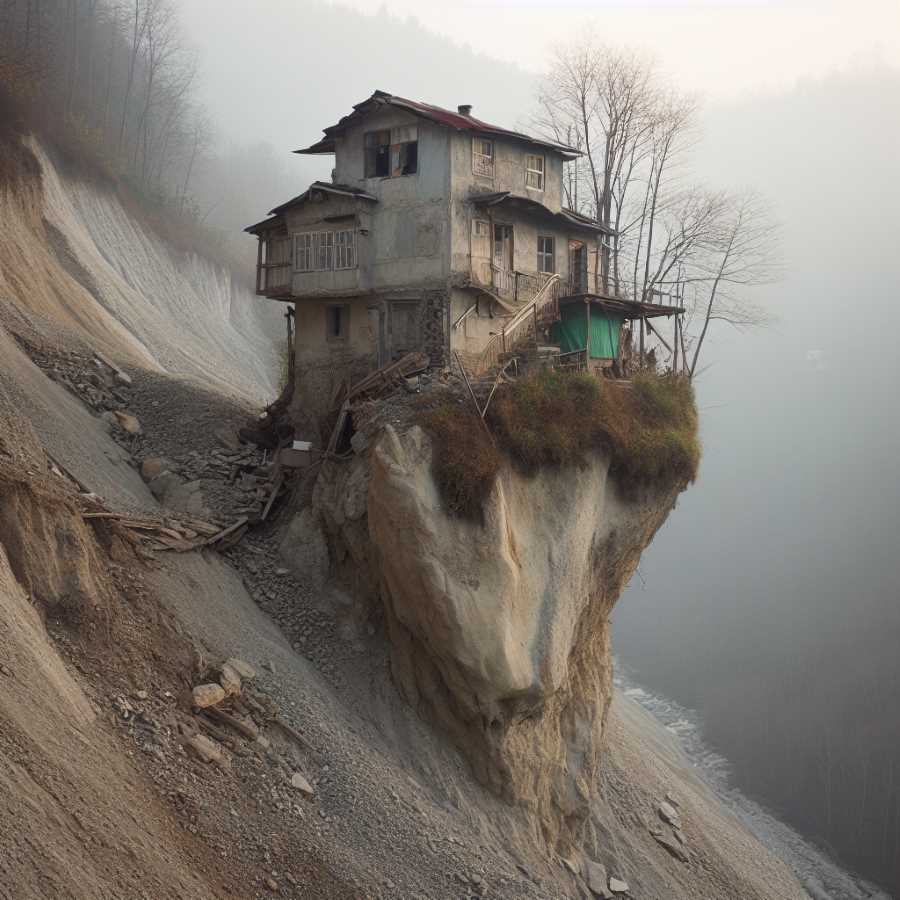How Human Actions Trigger Landslides and What We Can Do About It
Landslides surge as human impact worsens, demanding global action. Early warning systems offer hope, but developing nations face unique challenges. Collaboration, research, and sustainable practices are key to mitigating this rising threat and building a resilient future.

The Earth beneath our feet, seemingly solid and dependable, can sometimes shift with alarming fluidity, transforming into a devastating torrent of rock, mud, and debris. Landslides, these silent yet potent threats, have plagued humanity for millennia, leaving behind scars on the landscape and in our collective memory. In recent decades, however, their frequency and ferocity have escalated to a worrying degree, demanding our immediate attention and concerted action.
The stark statistics paint a grim picture. Irasema Alcántara Ayala, a renowned researcher and former director of the Institute of Geography at UNAM, paints a harrowing portrait: since 1900, over 840 landslide disasters have been recorded globally, claiming over 72,000 lives and affecting millions more. These figures, she cautions, represent the lower bound of the true impact, as countless smaller events go undocumented.
This alarming surge isn't solely a product of nature's whims. The Anthropocene, the epoch defined by human influence on the planet, has demonstrably worsened the situation. Alcántara Ayala highlights that 97% of these disasters occurred after 1950, with an average of 11 landslides per year in recent decades compared to less than one before the mid-20th century. The culprit? Our activities, from deforestation and mining to unchecked construction and unsustainable land-use practices.
These silent avalanches aren't random occurrences. They brew on unstable slopes, where natural factors like geology, hydrology, and seismic activity mingle with human-induced triggers like deforestation and leaky infrastructure. The consequences are far-reaching, not just in terms of lives lost and homes destroyed, but also in the crippling economic losses estimated at over 23 billion dollars in the past century.
In the face of this escalating threat, early warning systems emerge as beacons of hope. These intricate networks of sensors and monitoring devices track the slightest movement in susceptible slopes, aiming to predict impending landslides and alert authorities and communities. Countries like China, Italy, and Japan have successfully implemented such systems, demonstrating their potential to mitigate disaster.
However, as Ricardo Javier Garnica Peña, another UNAM academic, points out, the picture isn't as rosy everywhere. Developing nations, often bearing the brunt of landslide vulnerability, lack the resources and infrastructure to implement robust early warning systems. Vandalism, remoteness, power outages, and even a lack of collaboration between local authorities and scientists stand as formidable obstacles.
Mexico, with over 3,500 lives lost to landslides in the past century, is a stark example. While states like Guerrero, Chiapas, and Puebla grapple with the brunt of this threat, efforts like the one in Teziutlán, Puebla, highlight the challenges. A well-equipped monitoring station, tragically abandoned due to equipment theft, serves as a stark reminder of the need for not just technological investment, but also robust security and community engagement.
The path forward demands a multifaceted approach. Scientists like Garnica Peña advocate for strengthened bridges between science and public policy, alongside effective communication and capacity-building initiatives. Communities must be active participants, not merely passive recipients of information. Planning, territorial organization, and a focus on sustainable practices are crucial. Legislative frameworks need to evolve to reflect the new realities of a planet increasingly prone to landslides.
Ultimately, combating the landslide threat requires a global village effort. From the bustling metropolises to the remote mountain villages, we must collectively acknowledge the gravity of this silent, yet potent, danger. By fostering collaboration, investing in research and technology, and embracing sustainable practices, we can hope to transform the ominous rumble of shifting earth into a whisper of resilience, preparedness, and a future where landslides, though a potent reminder of nature's power, no longer claim innocent lives and shatter communities.
The ground beneath our feet may shift, but our resolve to stand firm in the face of this challenge must not. Let us work together, researchers, policymakers, communities, and individuals alike, to turn the tide on this escalating threat and build a future where landslides, while a natural reality, no longer pose an existential one.




